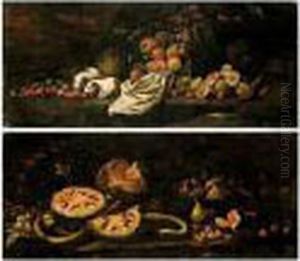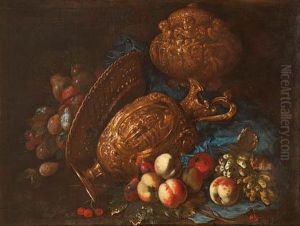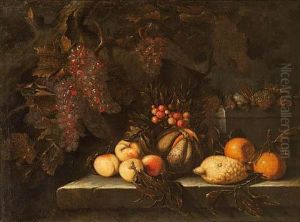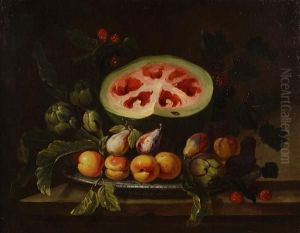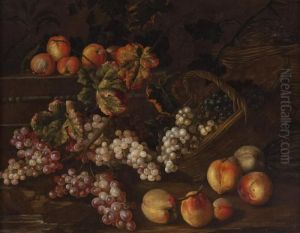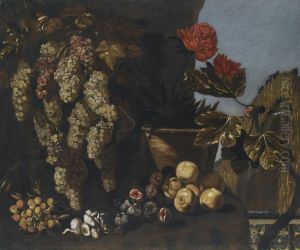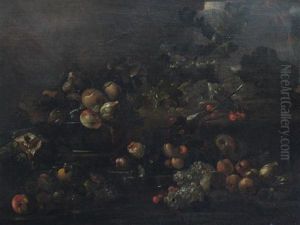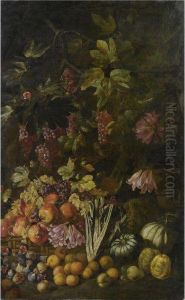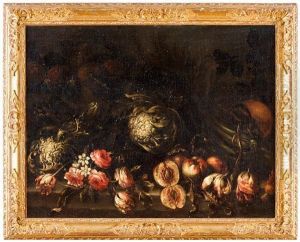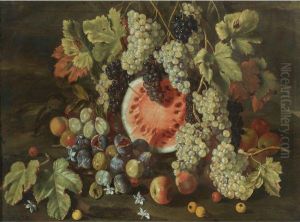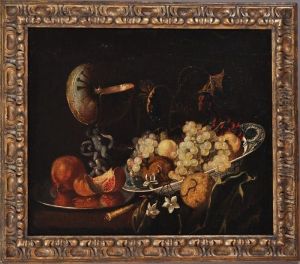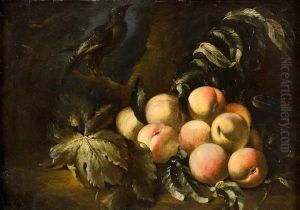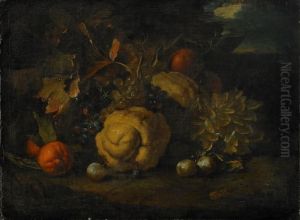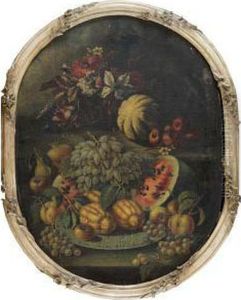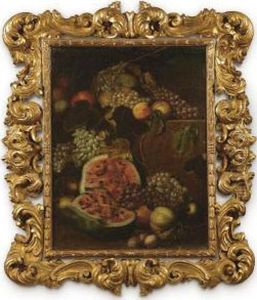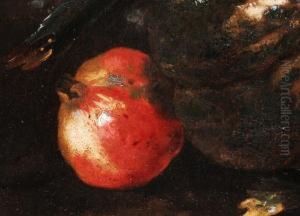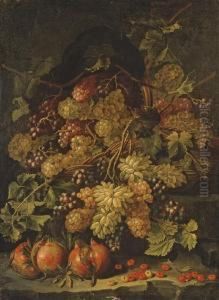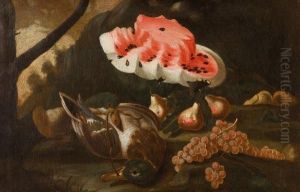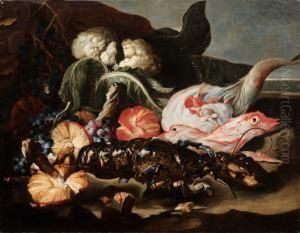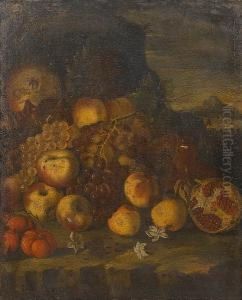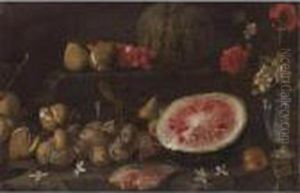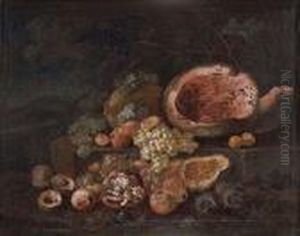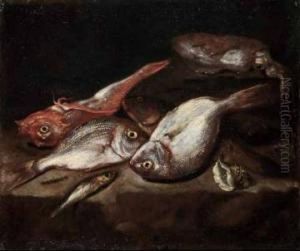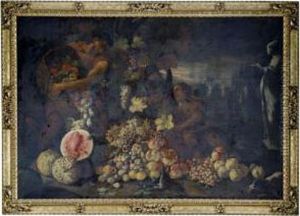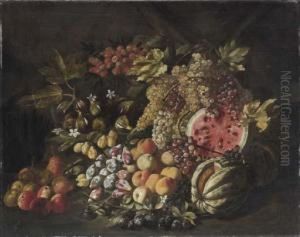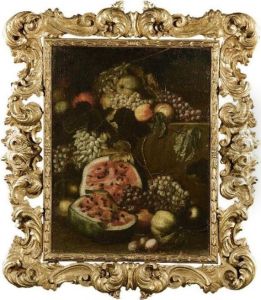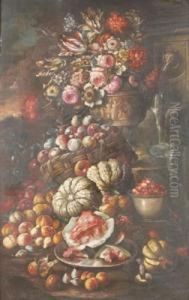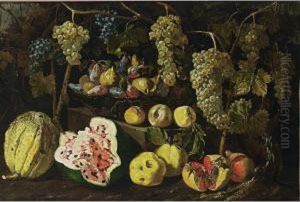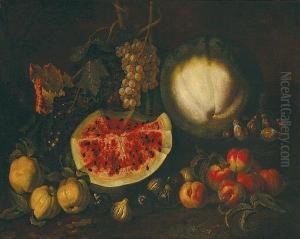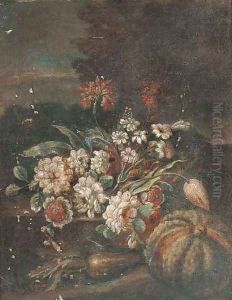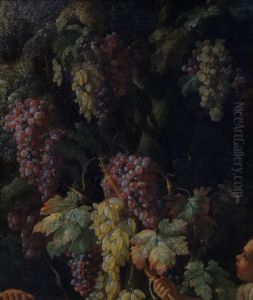Giovan Battista Ruoppolo Paintings
Giovan Battista Ruoppolo was an Italian Baroque painter, particularly recognized for his still-life paintings. Born in 1629 in Naples, Ruoppolo was part of the vibrant Neapolitan school of painting that flourished during the 17th century. He was greatly influenced by the works of other Neapolitan artists such as Luca Forte and Giuseppe Recco, and is considered one of the important proponents of still life, or 'natura morta,' in Italy. Ruoppolo's work typically featured abundant compositions of fruits, flowers, and other objects arranged on stone ledges or tables, often with a dark, contrasting background that enhanced the vividness and texture of the subject matter. He was adept at capturing the translucency of ripe fruits and the lush qualities of blooming flowers, imbuing his paintings with a sense of natural abundance and sensory delight. His paintings not only reflected the Baroque era's fascination with opulence and detail but also demonstrated a deep observation of nature and an ability to translate it into art. Despite his talent, Ruoppolo did not achieve the same level of fame as some of his contemporaries. However, his works were appreciated by local patrons and collectors during his lifetime. Ruoppolo's influence can be seen in the works of later still-life painters, and today his paintings are valued for their contribution to the development of the still-life genre in European art. Giovan Battista Ruoppolo passed away in 1693, leaving behind a legacy as a master of the still life that continues to be studied and admired.
